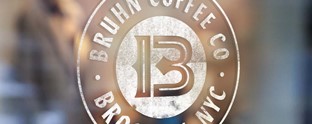Opinion: How does the internal brand differ from external?

Getting the internal brand right is a challenge for brand developers and managers. Employee engagement expert Ben Watson discusses flexibility, setting clear objectives and getting the tone right when communicating internally.
Branding has long been a customer facing activity, with only the slightest nod towards the internal audience. But, a powerful internal brand can have an impact on employees. The internal brand is instrumental when it comes to communicating clearly and effectively with employees, and this needs to occur without diluting the external brand.
If employees don't understand or believe in the brand they will feel disengaged or possibly even hostile towards their employer. However, ensuring employees have a powerful emotional connection to the priorities and objectives of a brand is just one part of an internal brand’s role.
Strong brands in particular are vulnerable to this as, in a bid to remain consistent, they often loose the flexibility required to communicate with impact internally.
Most big brands fall into one of two categories: those who have little distinction between the external and the internal brand, which leads to a deadening of the internal messages, and those who allow the internal brand to be pulled out of shape, thus undermining the external brand.
Ultimately, either approach can seriously damage corporate culture.
Organisations with powerful external brands are often of the opinion that the preservation of a brand’s look and feel, in all environments, is essential to its integrity and success. However, the requirements of an internal brand differ dramatically from its external requirements.
Externally, a brand competes with other brands. Under such competition, the need to retain a brand’s core attributes are understandable – to encourage distinction, recognition and clarity. External communication is largely focused on marketing, as a consequence the brand doesn’t have to do too much work as it focuses on a narrow range of messages.
Internally, the only thing a brand competes with is itself, as it is used on a daily basis for far more than just marketing. It has to impart a broader range of functions and messages and will be used to host and hold a range of different communications with different objectives. It has to compete for air, wall and head space, from operational issues, business changes, compliance campaigns and senior leadership memos.
Whereas consistency is needed externally, internally there is far more need for flexibility and range. The internal brand has to have the range to host messages that are serious or fun, regular or sporadic, corporate or irreverent, otherwise the internal messages risk becoming tired under the same eyes, quickly. The internal audience knows who the communication is from, so less time is required to remind them. This gives brand managers the license to play with the brand a little, to widen the range necessary for all internal communication, without leaving employees confused.
Having worked on internal positioning for brands such as Sainsbury’s, Experian and TfL, we have found that the key is coherence. The internal brand should feel like part of the family, of which TfL is a good example.
TfL’s external brand is, internationally well-known and iconic. However, as with most brands, it has been developed with a relatively narrow remit in mind. TfL is interesting because unlike most brands that operate solely as a marketing tool, TfL’s brand also acts as a vehicle for public information. However, it is still concerned with a relatively narrow range of topics.
As a result, our brief was to humanise it further, give the flexibly to host the range of messages required, ensure that it was immediately distinct from the external brand, but still sufficiently coherent that it was instantly recognisable as TfL, and didn’t undermine the external position.
Not an easy task. But with the introduction of some specific unique mechanisms, new guidance on tone of voice and a slight shift in the general positioning line, we were able to satisfy all the objectives. The result was an internal brand that still represents all the things that make employees proud to work for TfL – public service, innovation and efficiency – but does so under an umbrella that is suitable for the functions it has to perform. Ultimately the requirements of an internal brand will always differ dramatically from the external requirements.
Ben Watson is an account director at Blue Goose












